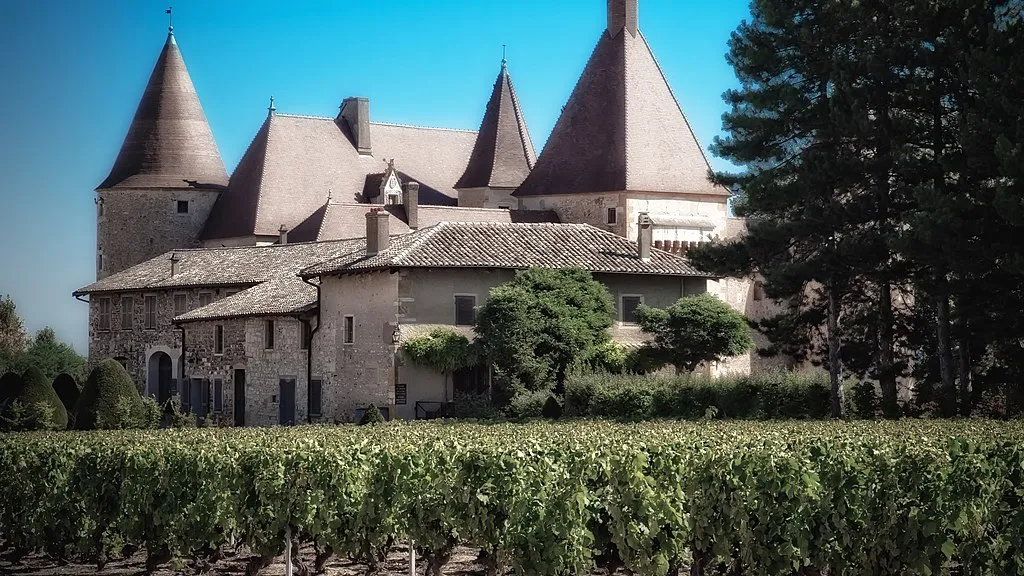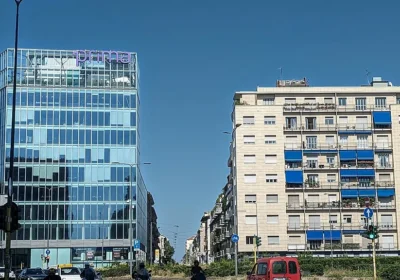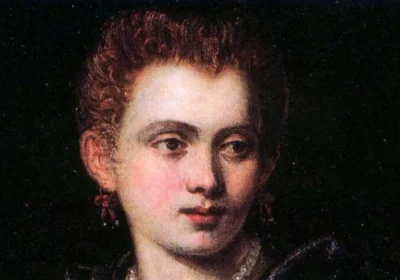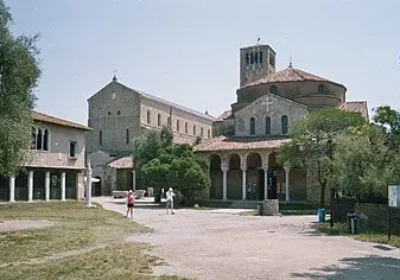The first mention of winemaking between Lyon and Mâcon dates back to the middle of the 10th century, and in 1395 the cultivation of the “black Gamay with white juice” grape variety (Camay Noir a jus Vlans) was officially authorized only in the Beaujolais region and simultaneously banned throughout the rest of Burgundy. Nowadays, two thirds of the world’s Gamay plantings are in Beaujolais.
Beaujolais wines are considered to be a hymn to young wine, which is drunk two months after the harvest, ceremonially uncorking the bottles at midnight on the third Thursday of November. Beaujolais got its name from the ancient capital of Beaujo (Beaujeu), which means “beautiful game” – a region where smoked meats, sausages, cervelates, all kinds of meat products are especially loved, from which many simple and intricate dishes are prepared.
Beaujolais wines combined with traditional cuisine is a feast among friends. The tradition of celebrating Beaujolais Nouveau dates back to the 19th century. The grapes were harvested earlier than in other places, and fermentation of the wine took place while it was being transported by barge along the Saône River or by wagon to the outskirts of Lyon. It is thanks to Beaujolais’ short maturation period that it retains its lightness and flavor, which varies from year to year, depending on the harvest and weather conditions.
In the old days, wine poured into special bottles called “pot” to celebrate the holiday. Until 1846 these were 1 liter bottles, they were called “Pot Lyonnais” (Pot Lyonnais) or “Pot de ville” (Pot de ville), and when its volume was reduced to the current traditional 46 cl (centilitre) – it led almost to a revolution among the local quarter boozers, who considered themselves bypassed and cheated.
Bottles of 46 cl were displayed on the bar counter, and customers paid by the meter (!), measuring the length of a row of empty ‘po’ bottles. There were 12 bottles per meter, and the thirteenth was usually offered for free “on the house”. It was then that the expression “boyau rouge”, i.e. “to be a good drinker”, originated. This tradition ceased to exist only during World War II, when the Germans introduced special taxes and rules for the sale of vintage wines in France during the occupation.
After the war, the French government introduced special rules for AOC wines. First, young wines were allowed to be sold from November 13 and then, after several decades, in 1985 they set the date of the beginning of the sale of young Beaujolais – from the third Thursday of November. And preparations for it begin six days in advance.
Posters are put up with the world-famous words “Le Beaujolais Nouveau est arrivé!” (For decades, this has been one of France’s favorite popular celebrations. Restaurants and bistros organize contests for the “best jug”, “golden bottle”, there are even guides to bistros – Beaujolais, published all over the world. And if you are going to France in November – a list of the best bistro-beaujolais in Paris.
Travels in the Beaujolais region often start at the small village of Vauxrenard in the northern part of the region. It is located on a hill and is famous for its unique view of almost half of the crus du Beaujolais (the wine-growing areas of Beaujolais). There is a special hiking route for about three kilometers, where you can see the typical landscape of the region and vineyards familiar from guidebooks. The wine museum is on the must-see list of local attractions. Its exposition was opened a dozen years ago in the premises of the old railroad station in the town of Romaneche-Thorins.
The Maison des Beaujolais in the village of Saint-Jean d’Ardieres just off highway No. 6 has been in existence for half a century and works without weekends. And the Musee de la Vigne et du Vin, with its wine tasting cellar, is a Vaux en Beaujolais deep in the region. There is also a rich exposition of the Sources du Beaujolais (Sources du Beaujolais) in ancient Beaujeu. There is also much to see in these places for lovers of historical heritage.
The many old castles well illustrate the history and culture of France through the centuries. Some of these chateaux welcome guests – you can spend a few days here getting to know the local wines and cuisine.
The Chateau de Bagnols, one of the region’s most remarkable chateaux, is a genuine 13th-century architectural masterpiece perched on a green hillside in the heart of Beaujolais. For those who like to see the unexpected, there are also non-core attractions like the Sewing Machine Museum in the village of Amplepluis. Here once lived the inventor of these useful machines, their evolution is clearly demonstrated in the museum exposition on about a hundred samples from 1830 to the present day. And the town of Tarare (Tarare), a little to the south, once every five years (in those years ending in 0 or 5) becomes the center of a grand festival of muslin, in 2000 it was celebrated for a week.
A compact area (about three dozen villages) southwest of Villefranche is called Pierres Dorees – literally “golden stones”. It is notable for its typical buildings made of stone of an unusually warm color – ochre or light terracotta depending on the weather and light; this stone was used to build houses and fences, churches and castles. A hundred years ago, the local quarries not only supplied the whole neighborhood with a convenient and beautiful building material, but also sent it to Lyon and even to nearby Switzerland.
Villages, castles, towns are made of golden, pleasing to the eye stone and scattered on picturesque hills covered with the most beautiful vineyards of France… Fans of wine and gastronomic tourism usually like various programs of the Beaujolais Wine School (I’Ecole Beaujolaise des Vins) in the town of Villefranche-sur-Saone, founded in 1140 and considered the capital of this wine region.
Here you can organize a special tasting for advanced gourmets or a program for beginners of different duration – for half a day, a whole day or a weekend, and even for a week, if you have enough energy: with trips to vineyards and cellars, with overnight stays in winemakers’ estates. All programs are available both individually and in groups, in Russian, French and other European languages. Comprehensive seminars on the wines of the region are conducted taking into account the local gastronomy, i.e. the listeners will not only be introduced to the technology of viticulture and winemaking and will learn the basics of tasting, but will also be advised on optimal food and wine pairings.

















